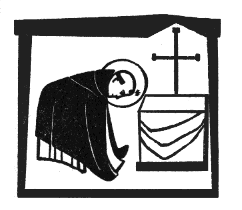St. Therese’s poem, “GLOSE ON THE DIVINE After St. John of the Cross” posed some puzzlement.
The English of ‘Poem of Little Flower Jesus’ brings little known vocabulary.
– Glose of the Divine.
 The Victorian
style translation does not make the poem easy. This text is from London 1925 printing.
The Victorian
style translation does not make the poem easy. This text is from London 1925 printing.
Further
hurdle is the fact that available Online versions omit some of the poems, in
particular the missing ‘Glose on the
Divine, after St. John of the Cross’.
[Similarly missing the Glose on the Divine, in a French first edition 1907].
[Similarly missing the Glose on the Divine, in a French first edition 1907].
Here, St.
Therese is in deeper experience with St. John of the Cross. A Link below helps
the explanation.
Hopefully there will be an updated translation, 2001. http://www.amazon.co.uk/Poems-Therese-Lisieux-Alan-Bancroft/dp/0006279503/ref=pd_sim_sbs_b_1
POEMS OF LITTLE FLOWER OF JESUS
GLOSE ON THE DIVINE
After St. John of the Cross
Leaning without support, without light
and in darkness,
I go to consume myself of love. " - St. John of the Cross.
I go to consume myself of love. " - St. John of the Cross.
To the world,
with delight all-surpassing,
An eternal farewell I have said;
An eternal farewell I have said;
O'er itself
wings my heart life-amassing,
From support save in God it hath fled!
From support save in God it hath fled!
And now in His
light I am seeing
What is dearest where joys overbrim,
What is dearest where joys overbrim,
'Tis when heart,
soul, and all of my heing
Lean, and know no support save in Him.
Lean, and know no support save in Him.
While I suffer
in darkness unbroken,
Through this mortal delay of an hour,
Through this mortal delay of an hour,
I possess here
at least one fair token,
The star of love's infinite power.
The star of love's infinite power.
In the way, all
of peril surroundeth,
But I follow, no fear can debar,
But I follow, no fear can debar,
For by love, well
I know life aboundeth
’Mid the shadows of exile afar.
’Mid the shadows of exile afar.
His love as I
learn every hour,
Can profit by good and by ill
Can profit by good and by ill
That He findeth
in me: O what power!
Transforming my soul at His Will.
Transforming my soul at His Will.
This flame
feedeth deep, nor returneth,
It pierceth my heart from above;
It pierceth my heart from above;
As with ardours
of fire it burneth,
I go hence, consumed in my love.
I go hence, consumed in my love.
1896.
++++++++++++++++++++++++++++++++++++
Glose (or Glosa)
The glose originated
in Spain, where it is known as the glosa. It has two parts, which are normally written
by different authors.
The first part - the texte or cabeza - consists of a few lines which set the
theme for the
entire poem. Typically this will be a stanza from a well-known poem or poet -
although it is perfectly permissible to write your own texte.
The second part - the glose or glosa proper - is a gloss on, or explanation of,
the texte. It takes the form of an ode, with one stanza per line of the texte.
Each stanza in turn expands upon its corresponding line of texte, and ends with
a repetition of it.
An example will make this clearer.
Another blow for press freedom
The painful warrior famoused for fight
After a thousand victories once foiled
Is from the book of honour razèd quite
And all the rest forgot for which he toiled.
A thug, about him something of the night,
But our thug, who took up arms and stood firm,
Brave, strong and tall for what he thought was right.
A hero, though he’d blush to hear the term,
The painful warrior famoused for fight.
- - - - -
Related forms
©
Bob Newman 2004. All rights reserved.









 SAINT DOMINIC'S first way of prayer was to humble himself before the altar as if Christ, signified by the altar, were truly and personally present and not in symbol alone. He would say with Judith: "O Lord, God, the prayer of the humble and the meek hath always pleased Thee [Judith 9:16]. "It was through humility that the Canaanite woman and the prodigal son obtained what they desired; as for me, "I am not worthy that Thou shouldst come under my roof" [Matt. 8:8] for "I have been humbled before you exceedingly, O Lord [Ps. 118:107]."
SAINT DOMINIC'S first way of prayer was to humble himself before the altar as if Christ, signified by the altar, were truly and personally present and not in symbol alone. He would say with Judith: "O Lord, God, the prayer of the humble and the meek hath always pleased Thee [Judith 9:16]. "It was through humility that the Canaanite woman and the prodigal son obtained what they desired; as for me, "I am not worthy that Thou shouldst come under my roof" [Matt. 8:8] for "I have been humbled before you exceedingly, O Lord [Ps. 118:107]."